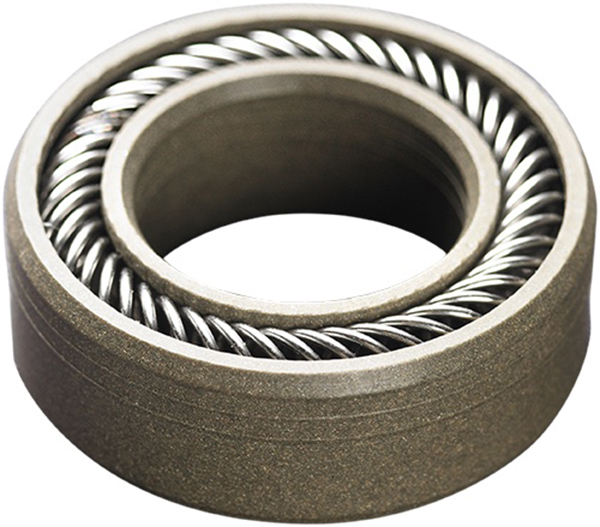Spring-Energized Ball Seals

Spring-Energized Ball Seals
The spring-energized seal, a U-cup lip seal made from specially-formulated polymers and reinforced by an energizing component, can be a valuable tool in the engineer’s problem-solving arsenal. While it may not be suitable for every application, the design has an impressive track record in environments considered too aggressive for other seal types. If getting more performance and reliability out of your designs is the challenge, a spring-energized seal could be the solution.
What does a spring-energized seal do?
- Acts as a physical barrier to fluids and gases
- Relies on interference between seal and hardware
- Uses design, pressure, force to optimize contact
- Leverages material science to resist media, wear
Spring-Energized Seal Advantages
The spring-energized seal is capable of providing longer service as compared with conventional (non-energized) polymer or elastomeric seals. This is because contact pressure at the sealing lip remains high throughout the life of the seal. Even as seal materials wear, the energizer compensates for angular misalignments across a wide working spring force deflection range to maintain constant and even force across the seal lip, maintaining sealing pressure. This inhibits the formation of leak paths, which results in fewer maintenance intervals and increased equipment uptime. In addition to promoting even wear and maintaining constant pressure throughout the life of the seal, the spring-energized seal also reduces media contamination by incorporating chemically compatible, wear-resistant materials. This reduces the possibility of premature degradation, and minimizes the potential for seal material “shedding.”
How a Spring-Energized Seal Works
A spring-energized seal usually relies on interference for retention in the housing and to apply pressure at the sealing surface. During installation, the static seal lip is compressed into the housing bore, and the dynamic lip is stretched over the dynamic surface (piston). The compression load applied to the seal causes a reactive force generated by the compressed energizing spring. This precise interference between the sealing lip and sealing surfaces establishes a barrier that prevents the media from leaking past the seal. Effective sealing requires some contact stress between the seal lips and the hardware. This stress, and the resulting friction, can be controlled by adjusting the jacket geometry, material, and energizer force.